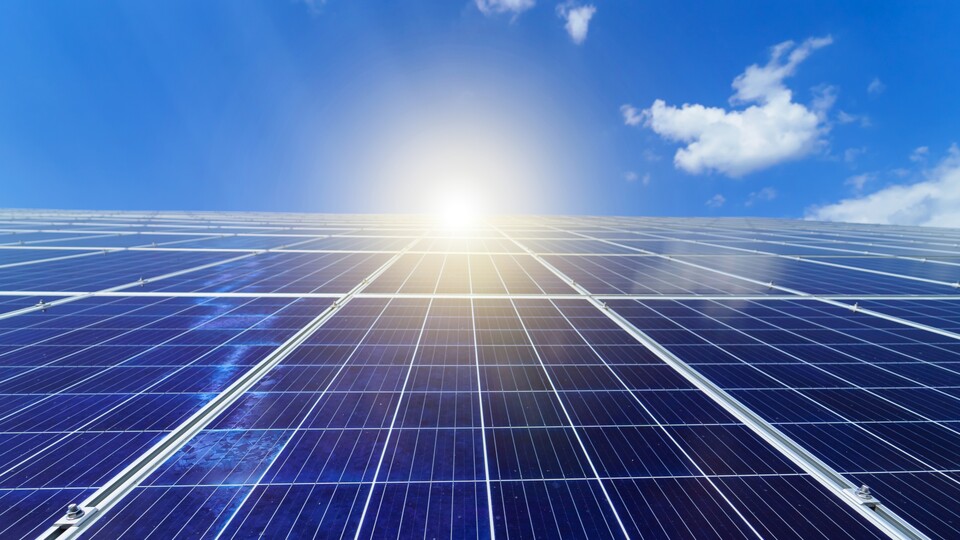
Solar power to the hilt: What many people want from the energy transition is partly a reality in the sunny state of California. But there are still construction sites when it comes to storage. (Image source: Adobe Stock/Vadim)
Advertisement
A few weeks ago we reported that California had installed too many solar systems on roofs. The green electricity cannot be used and stored, the price of electricity regularly collapses and many megawatt hours are lost unused.
Now there is an update. The New York Times (TNYT) reported on May 7, 2024 about the new installation of several battery systems that can also power some California households at night. A fifth of households can now be powered by battery power.
Why is that important? Solar energy is produced during the day. However, most households tend to use the most electricity in the morning and evening, before and after work hours. A practical storage solution is often missing here.
- California relies particularly heavily on solar power and has something of a pioneering role.
- If the state finds practical solutions, these ideas could be exported.
- California is currently relying on large energy storage devices in the form of batteries.
The problem: In 2022, the state lost around 2.4 million megawatt hours of electricity because neither the grid nor storage options could keep up with the solar expansion. According to TNYT However, there is currently a lot of investment and construction to be done.
Advertisement
Video: This is what some of the newly built battery storage systems in California look like. They are strung together like large shipping containers or XXL terminal blocks and in this case supply electricity for around 700,000 households (680 MW):
Link to YouTube content
In detail: California installed a total of 10,000 MW of battery storage capacity in the last 3 years. According to TNYT, China has built more electricity storage than anywhere else in the United States and the rest of the world.
- Current status: On April 30, 2024, these systems delivered large amounts of electricity between 7 p.m. and 9 p.m.
- Approximately a fifth This meant that all households could be served with up to 7,046 MW of power for some time.
- This corresponds to the output of seven large nuclear power plants.
Commenting on the battery expansion, Helen Kou, head of US energy analysis at BloombergNEF, told TNYT:
What's happening in California is a foretaste of what could happen to other networks in the future. Batteries are transforming from a niche application to an energy supplier for large amounts of renewable energy during peak demand periods.
USA sees future in battery storage: By the end of 2023, the United States installed a total of 16,000 megawatts of battery storage nationwide. According to a forecast by US Energy Information Administration This number is expected to double by the end of 2024.
Speaking of energy storage: Our editor Dennis Ziesecke repeatedly tests so-called balcony power plants. This time he is checking out a power station for us, thanks to which he can also use solar power at night.
Are huge battery storage systems a role model solution for the world?
Can battery storage help us combat climate change globally? The TNYT article addressed this question, at least within the USA, and came to an interesting research result.
Actually, the USA would have thanks to this battery storage – filled with green solar power
– there is definitely the potential to have to produce less electricity from coal or nuclear power.
In practice, according to TNYT, operators sometimes use coal and gas power to maximize their storage capacity and thus maximize revenue. In California's case, it appears to be reducing overall gas consumption, which has fallen to its lowest level in seven years.
Loud BloombergNEF and TNYT, battery storage in the USA currently competes primarily with smaller gas-fired power plants that can be switched on when needed during peak load times. However, the price for these battery storage systems is still too expensive to replace large gas power plants that constantly supply electricity with storage systems.
In principle, the approach of storing green energy is the right one to curb the burning of oil, gas and coal. However, it is questionable whether lithium-ion batteries can help on a large scale.
In addition to the high price, the mining of lithium should also be viewed critically. Lithium is according to the Bavarian Radio mostly obtained in South America.
Worth knowing: There the alkali metal is pumped up with the saline groundwater, which then evaporates. Several hundred liters of drinking water are lost per kilogram of lithium.
Conceivable alternatives to classic lithium-ion batteries
Battery life: Most storage systems consist of lithium-ion batteries. In addition to the environmental issue, these batteries have another problem. As mentioned above, they usually provide between two to four hours of power.
Alternative material: There are approaches such as so-called flow batteries Start-ups ESS, which rely on liquid electrolytes and are supposed to provide electricity for up to twelve hours. Another company called Form Energy is researching iron-air batteries that are supposed to provide electricity for even 100 hours.
- Alternatively, green electricity could be converted into hydrogen.
- Liquid salt storage could temporarily store solar power as thermal energy.
What do you think? Are lithium batteries on a large scale the solution to how renewable energy can be sensibly stored? What other storage options do you know? Which of these do you think is particularly useful? Feel free to write it in the comments.